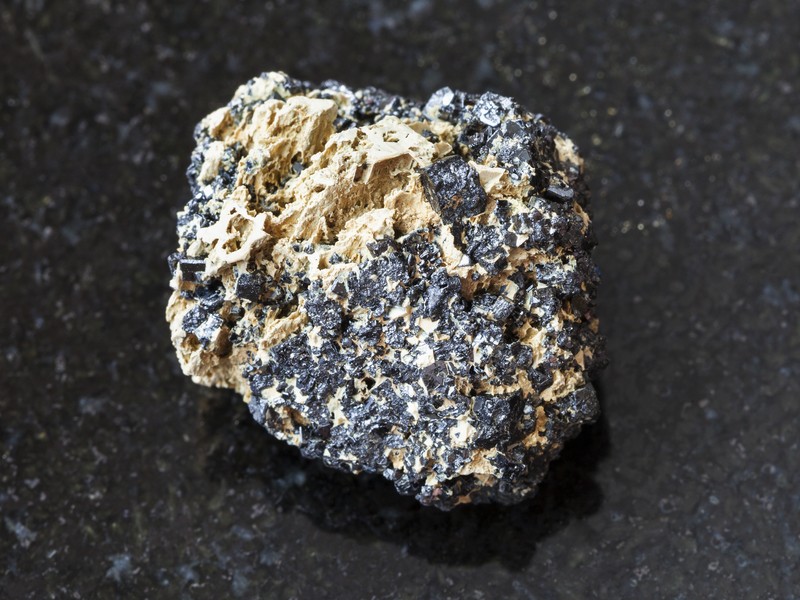
UC professor researches perovskite for chemical processes

UC Assistant Professor of Chemical Engineering Jingjie Wu.
Perovskite is not exactly a household name, but it's actually one of Earth's most common minerals. Perovskite makes up 38 percent of Earth's entire mass. You just don't hear about it because most of it is buried hundreds of miles under the planet's surface.
University of Cincinnati chemical engineering professor Jingjie Wu, Ph.D., is fascinated by the practical applications of perovskite. Wu recently received the Oak Ridge Associated Universities' Ralph E. Powe Faculty Enhancement Award for his proposal, "Developing the Design Principles of Layered Perovskites Catalysts for Chemical Synthesis."
Over the next year, Wu will collaborate with the Oak Ridge National Laboratory in Oak Ridge, Tennessee, to complete the project.
"The research will aim to develop a new class of catalysts," Wu said. "We will use this new class to study different chemical activations and reactions using perovskite."
Perovskite may not seem relevant to you or me, but to scientists and engineers, this mineral is the cornerstone for cutting-edge research. Wu's innovative work is a reflection of UC's strategic direction, Next Lives Here.
As a semi-conductor, perovskite presents fascinating possibilities, and its abundance makes research and development inexpensive. Researchers are exploring applications of perovskite in technologies such as solar panels, television screens and LED lights.
Perovskite's also has a unique makeup, makingit one of nature's most flexible minerals -- scientists can easily alter perovskites electronic and crystal structure to fit research and industry needs.
Wu plans to use this unique makeup to drive chemical processes.
Layered perovskite has a structural formula of A2BO4, meaning perovskites are composed of two metal elements (A and B) and one oxygen element. As Wu adjusts the properties of the A-site metal, the B-site changes accordingly.
"There are abundant opportunities to tune the electronic structure of perovskite," Wu said. "That's the beauty of it."
By intentionally altering its structure, Wu hopes to use perovskite as a catalyst to drive chemical reactions in processes such as fuel or gas conversion. For this research, he is focusing on one compound in particular: Isopropanol.
Isopropanol (C3H8O) can be converted into propylene through dehydration (the removal of water) or acetone through dehydrogenation (the removal of hydrogen). If Wu can show that perovskite can act as a catalyst to activate these changes, then perovskite may be fundamental in driving other types of chemical reactions that involve similar bond activation.
Thanks to the collaboration between UC and the Oak Ridge National Laboratory, perovskite may soon replace other catalysts as a better, cheaper option for sparking important chemical processes.
Featured image at top: A rouch perovskite stone is placed against a dark granite background. Perovskite makes up 38 percent of the Earth's mass. Photo/vvoe/Shutterstock
Next Lives Here
The University of Cincinnati is classified as a Research 1 institution by the Carnegie Commission and is ranked in the National Science Foundation's Top-35 public research universities. UC's graduate students and faculty investigate problems and innovate solutions with real-world impact. Next Lives Here.
Related Stories
We love ‘Lucy’ — the AI avatar redefining UC tech transfer
July 17, 2024
In a visionary leap at the University of Cincinnati, the marriage of artificial intelligence and interactive technology has birthed "Lucy," a Smarthelp AI avatar poised to revolutionize how regional industries engage with UC's tech transfer initiatives.
NIS program opens new horizons for international student
July 17, 2024
In his pursuit of physics and a taste for research, Akash Khanikor ventured from his hometown in India's Assam to the University of Cincinnati, drawn by the promise of hands-on exploration early in his undergraduate career as a NEXT Innovation Scholar.
Camp aims to empower children, teens who stutter
July 17, 2024
A one-week, evidence-based program for children and teens who stutter at the University of Cincinnati will teach kids to communicate effectively, advocate for themselves and develop confidence about their communication abilities. Camp Dream. Speak. Live., which is coming to Cincinnati for the first time July 22-26, began in 2014 at the University of Texas at Austin. The Arthur M. Blank Center for Stuttering Education and Research at UT expects to serve more than 2,000 children at camps across the United States, Africa, Asia and Europe this year.
